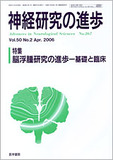Japanese
English
- 有料閲覧
- Abstract 文献概要
- 1ページ目 Look Inside
- 参考文献 Reference
脳内出血後の脳浮腫発生に多くのメカニズムが関与していることが,基礎的研究で明らかとなっている。従来考えられていた血腫周囲の脳血流低下は,脳内出血発症後一時的なものであり,またその血流低下も強い脳虚血を生じるほどのものではないことが報告され,脳虚血は脳内出血後の脳浮腫発生に限定的な役割を果たしているにすぎないと考えられている。その後の研究で,1)急性期(最初の2日以内)に起こる一連の血液凝固反応活性化とそれに伴うトロンビンの形成,2)亜急性期(3日目以降)の赤血球溶解とそれに伴うヘモグロビン誘発神経毒性が,脳内出血後の脳浮腫に重要な役割を果たすことが明らかにされた。さらには脳組織における炎症反応や補体系の活性化,マトリックス分解酵素の発現もこの時期の脳浮腫の発生に重要な役割を果たすことが報告されている。種々のメカニズムに対応した内科的療法の可能性が追求されるとともに,脳損傷を最小限に抑えた血腫吸引除去術の有効性をさらに検討していく必要があると思われる。
A number of mechanisms may be involved in the brain edema formation after an intracerebral hemorrhage(ICH). It was believed that brain edema after ICH was due to local pressure compressing the microcirculation and producing ischemia in the region around the hematoma. However, there is no experimental evidence that the degree or duration of hypoperfusion around the hematoma is sufficient to produce ischemic brain damage. Attention has later focused on the direct role of the biochemical substances from an intracerebral blood clot in generating brain edema. At least two phases of edema formation are involved in ICH. These include an acute phase(first 2 days)involving the activation of the coagulation cascade and thrombin formation and a subacute phase(after 3 days)involving red blood cell lysis and hemoglobin-induced neuronal toxicity. Inflammatory reactions including activation of the complimentary system and expression of the matrix metalloproteinases in the brain parenchyma also play an important role in ICH-related brain edema formation. Animal models indicate that a number of compounds are capable to reduce the brain edema formation after ICH. Furthermore, hematoma removal by stereotactic hematoma aspiration may be one of the best strategies to minimize the brain injury and brain edema formation after ICH.

Copyright © 2006, Igaku-Shoin Ltd. All rights reserved.


